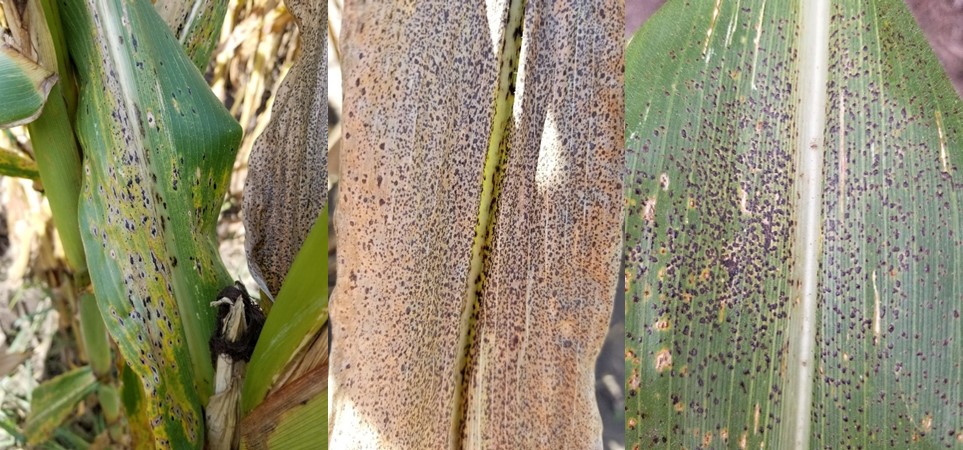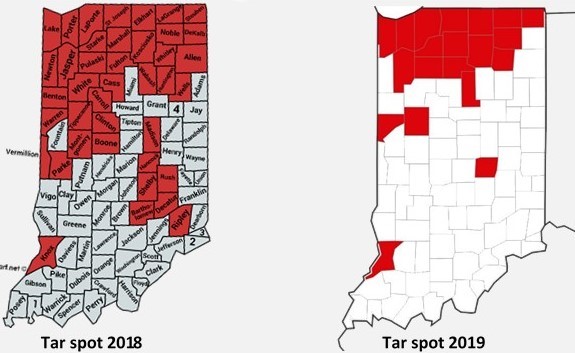Tar spot of corn has been a concern this season after the localized epidemics we experienced last year in Indiana. At this point in the field season, there are a number of areas with active tar spot. We again would like to document tar spot disease distribution and severity in Indiana. Our research trials are in full swing and optimistically we will have some positive results about management this winter, but we still need your help collecting samples and documenting this disease. It is not only important to understand tar spot distribution statewide, but it is extremely important to know if this disease is present in your fields for future risk assessments and to implement disease management tools if necessary.
We have currently confirmed active tar spot fields in 20 counties in 2019. In 2018, we confirmed tar spot in 41 counties (Figure 1).
What to look for: Small, black, raised spots (circular or oval) develop on infected plants, and may appear on one or both sides of the leaves, leaf sheaths, and husks. Spots may be found on both healthy (green) and dying (brown) tissue. Often, the black spots are surrounded by a tan or brown halo; this is especially obvious on healthy leaves (see Figure 2).

Figure 2. Corn leaves infected by tar spot. Infection can range from severe to mild on a leaf. The spots will be raised (bumpy to the touch) and will not rub off. In addition, they be surround by a tan or brown halo. (Photo Credit: Darcy Telenko)
We greatly appreciate the samples that we have received this season and want you to keep it up. If you have (or think you have) corn tar spot, please collect several leaves showing the symptoms and sed them with a PPDL form https://ag.purdue.edu/btny/ppdl/Documents/Forms/PPDL-Form_13MAY15FILLABLE.pdf.
Please wrap the leaves in newspaper and ship in a large envelope. Please ship early in the week. If you are sending samples from multiple locations please label them and provide the date collected, variety of corn, field zip code or county, and previous crop.
Research funding from the Indiana Corn Marketing Council is supporting sample processing, therefore there will be no charge for corn tar spot samples submitted to the clinic.
Mail to: Plant and Pest Diagnostic Laboratory
LSPS-Room 116, Purdue University
915 W. State Street
West Lafayette, Indiana 47907-2054
Question please contact Darcy Telenko (dtelenko@purdue.edu/764-496-5168) or PPDL (ppdl-samples@purdue.edu/765-494-7071)



